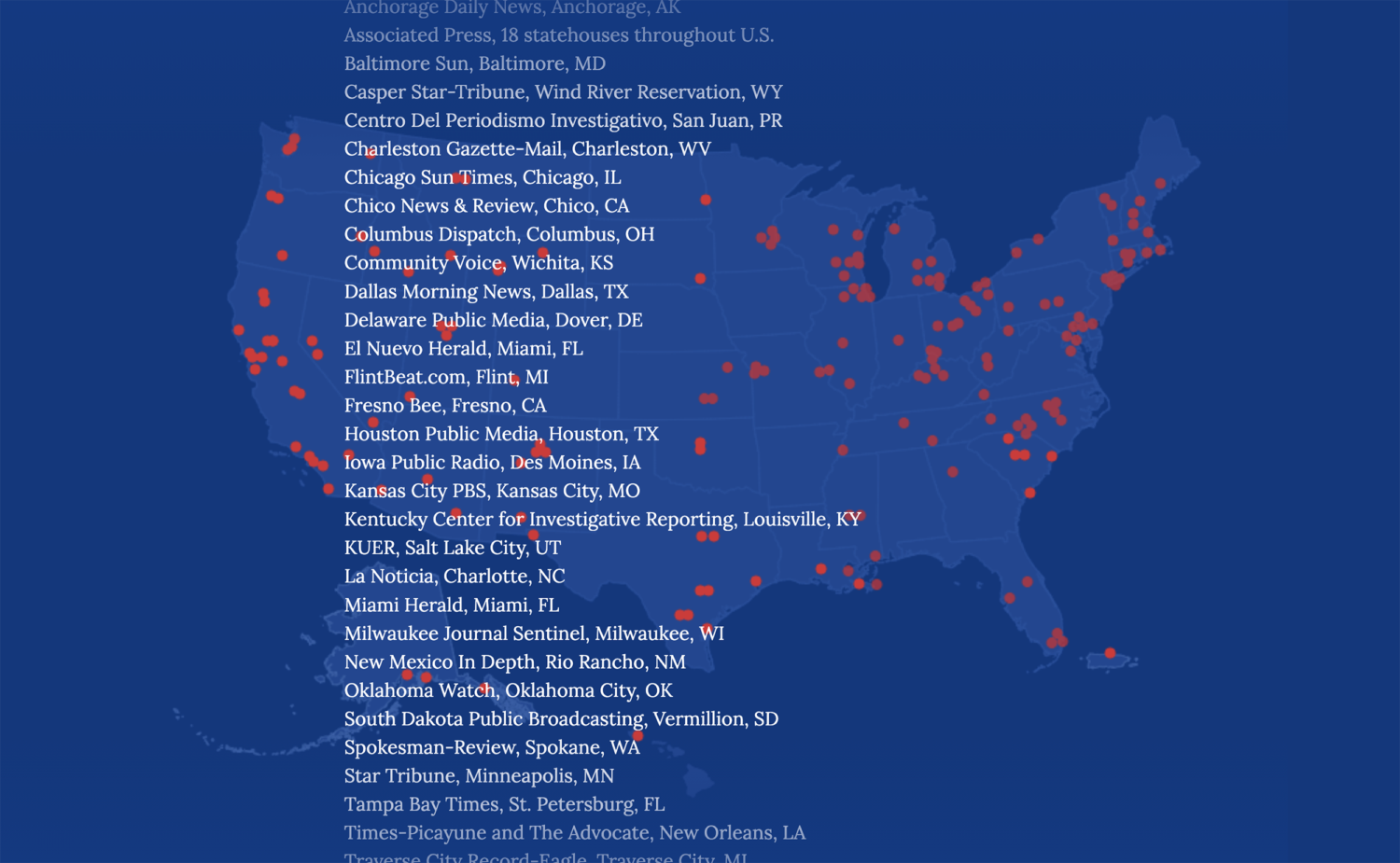Report for America has opened applications for newsrooms to host its fifth class of reporters and editors to be placed in the summer of 2022.
The nonprofit program has partially funded roughly 300 journalists this year. That number will substantially expand, president and co-founder Steve Waldman told me, but he is not sure yet by how much, depending on funding and other factors.
Report for America typically places journalists early in their careers, but last year it added slots for some more experienced reporters and editors. It had 1,800 applications for 130 new positions in 2021 (some of the 300 are being funded for a second or third year). Organizations hoping to receive reporters also go through a competitive screening process.
One added emphasis for 2022, Waldman said, will be more placements in rural America, where there are numerous true news deserts — communities no longer served by a newspaper or other local media.
“You have to be strong there if you are going to tackle the problem,” Waldman said. “We also see it as a way to make an impact on the issue of polarization. … Our premise is that the vacuums in local journalism are being filled by national news and disinformation.”
A spotlight project with a rural emphasis, also announced this week, will be a collaboration between Report for America and the University of Missouri’s journalism school — 10 reporters for a new desk covering agricultural, environmental and water issues in the Mississippi River Basin. The journalism school is providing oversight and help with placing stories. The project is mainly being funded by a $1.4 million three-year grant from the Walton Family Foundation, which has become a major funder of environmental journalism.
In its early years, nearly all the Report for America grants went to newspapers or other established organizations. Some chose to extend the geographic area they covered, others to staff a beat that had not quite made the cut as financial pressures forced newsroom contraction.
Those are still good options, Waldman said, but he has come to believe that helping with the news desert problem should also include startups if they have a strong editorial plan and sufficient financial backing.
As for subject matter, Report for America announced several targets for the coming year: health care, education, communities of color, immigration, economic development, local government, religion, obituaries, military and veteran affairs and sports. Applications for journalists will open in December.
“We don’t want to put our thumb on the scales (in picking topics),” Waldman said, preferring to let assessment of what’s needed bubble up from the organizations applying to participate. But as time goes on, there are patterns of what needs to be addressed; either gaps in the news landscape or in Report for America’s portfolio. Last year, for instance, the program made a point to make placements in Black and other ethnic media while choosing persons of color for 45% of the reporting corps.
“At first, we were very focused on accountability reporting,” Waldman said, “but we are finding that what binds the community together (even softer topics like religion) is important too.”
Waldman and co-founder Charles Sennott organized the initiative in 2017 and started small with 14 placements. That has allowed a learn-as-you-go approach with year-to-year add-ons and fine-tuning of the kind of people and the kind of assignments receiving organizations most need.
From the start, Report for America has required at least a 50% match, making sure recipients are committed financially rather than just taking a grant and giving them a strong incentive to tap into philanthropic support in their own community.
A downside is that employing reporters — even just a few hundred — is expensive compared to training programs, small grants and other typical capacity-building efforts in the growing nonprofit news sector.
Plus, as Report for America grows, it needs more staff of its own. Waldman said that the program has about 22 employees now, not counting others who help from its parent organization, Sennott’s GroundTruth Project.
This spring, Report for America was one of six finalists, though not the winner, of a MacArthur Foundation competition to award $100 million to tackle a huge problem (the local news crisis in its proposal).
So Waldman’s and Sennott’s ambition to get the program to thousands rather than hundreds of placements will need to roll over a few years, but its direct impact and influence remain on an upward path.
Correction and update: GroundTruth is Report for America’s parent organization, not sister organization. Also, the reporting corps is now 45% journalists of color. And we added a note that the Walton Family Foundation has funded environmental journalism.







